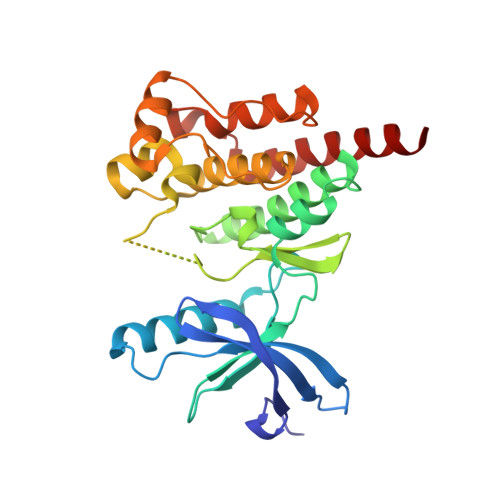Sulfoximine-substituted trifluoromethylpyrimidine analogs as inhibitors of proline-rich tyrosine kinase 2 (PYK2) show reduced hERG activity.
Walker, D.P., Zawistoski, M.P., McGlynn, M.A., Li, J.C., Kung, D.W., Bonnette, P.C., Baumann, A., Buckbinder, L., Houser, J.A., Boer, J., Mistry, A., Han, S., Xing, L., Guzman-Perez, A.(2009) Bioorg Med Chem Lett 19: 3253-3258
- PubMed: 19428251
- DOI: https://doi.org/10.1016/j.bmcl.2009.04.093
- Primary Citation of Related Structures:
3H3C - PubMed Abstract:
The synthesis, in vitro properties, and in vivo pharmacokinetics for a series of sulfoximine-substituted trifluoromethylpyrimidines as inhibitors of proline-rich tyrosine kinase, a target for the possible treatment of osteoporosis, are described. These compounds were prepared as surrogates of the corresponding sulfone compound 1. Sulfone 1 was an attractive PYK2 lead compound; however, subsequent studies determined this compound possessed high dofetilide binding, which is an early indicator of cardiovascular safety. Surprisingly, the corresponding sulfoximine analogs displayed significantly lower dofetilide binding, which, for N-methylsulfoximine (S)-14a, translated to lower activity in a patch clamp hERG K(+) ion channel screen. In addition, compound (S)-14a shows good oral exposure in a rat pharmacokinetic model.
Organizational Affiliation:
Pfizer Global Research and Development, Eastern Point Road, Groton, CT 06340, USA. [email protected]
















